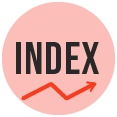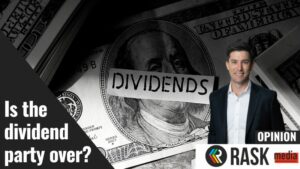
How to properly compare Australian fund managers
The common mistake I see across the financial media, retail investors, and scarily, most financial advisers are not comparing ‘apples with apples’ when it comes to selecting fund managers.

The S&P/ASX 200 Index (INDEXASX: XJO) is an Australian stock market index, created and maintained by Standard & Poor’s (S&P). It tracks the value of the 200 largest public companies ranked by their market capitalisation, adjusted for the shares that are actually available on the market. The S&P/ASX 200 will increase if enough companies see their share prices rise, and fall when they are sold down.
If you’re studying the stock market’s return over time, don’t forget about dividends. The XJO index does NOT include dividends paid by companies. If you want a more complete picture of the performance of Australian shares, use the S&P/ASX 200 Net Total Return Index (INDEXASX: XNT) index.
This chart shows performance of the index and S&P/ASX 200 Net Total Return (INDEXASX: XNT), which includes the impact of dividends being reinvested. The three most popular indices for Australian shares are the All Ordinaries (INDEXASX: XAO), S&P/ASX 200 Net Total Return (INDEXASX: XNT), and S&P/ASX 200 (INDEXASX: XJO).

The common mistake I see across the financial media, retail investors, and scarily, most financial advisers are not comparing ‘apples with apples’ when it comes to selecting fund managers.

Both the key Australian indices fell on Monday, with the S&P/ASX200 (INDEXASX: XJO) falling 0.3% and the All Ordinaries (INDEXASX: XAO) 0.4% with the technology sector the biggest detractor, down 2.8%.

Here’s today’s The Match Out report from Market Matters’ James Gerrish. Key point: the S&P/ASX 200 (INDEXASX: XJO) finished down -0.35% to 7026.50.

The Commonwealth Bank of Australia (ASX: CBA) share price started the year at $98.57. CBA shares recently traded around $100.54. Is the CBA share price top value?

The Bank of Queensland Limited (ASX: BOQ) share price is down around 20% since the start of the year. Is the BOQ share price top value?

The Westpac Banking Corp (ASX: WBC) share price has fallen 5% since the start of the year. Is the WBC share price in the money?

Here’s today’s The Match Out report from Market Matters’ James Gerrish. Key point: the S&P/ASX 200 (INDEXASX: XJO) finished up +0.037% to 7091.00.

As more Australians continue to use ETFs, it’s important for investors to understand these essential tips, from the advantages of broad diversification and cost-efficiency, to comparing ETFs and understanding the role of market makers and authorised participants.

In a higher rate environment with equities offering an underwhelming risk premium, many are questioning whether equities still offer much capital growth upside.

The common mistake I see across the financial media, retail investors, and scarily, most financial advisers are not comparing ‘apples with apples’ when it comes to selecting fund managers.

Both the key Australian indices fell on Monday, with the S&P/ASX200 (INDEXASX: XJO) falling 0.3% and the All Ordinaries (INDEXASX: XAO) 0.4% with the technology sector the biggest detractor, down 2.8%.

Here’s today’s The Match Out report from Market Matters’ James Gerrish. Key point: the S&P/ASX 200 (INDEXASX: XJO) finished down -0.35% to 7026.50.

The Commonwealth Bank of Australia (ASX: CBA) share price started the year at $98.57. CBA shares recently traded around $100.54. Is the CBA share price top value?

The Bank of Queensland Limited (ASX: BOQ) share price is down around 20% since the start of the year. Is the BOQ share price top value?

The Westpac Banking Corp (ASX: WBC) share price has fallen 5% since the start of the year. Is the WBC share price in the money?

Here’s today’s The Match Out report from Market Matters’ James Gerrish. Key point: the S&P/ASX 200 (INDEXASX: XJO) finished up +0.037% to 7091.00.

As more Australians continue to use ETFs, it’s important for investors to understand these essential tips, from the advantages of broad diversification and cost-efficiency, to comparing ETFs and understanding the role of market makers and authorised participants.

In a higher rate environment with equities offering an underwhelming risk premium, many are questioning whether equities still offer much capital growth upside.




